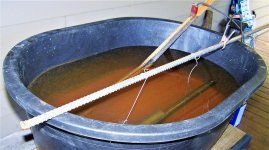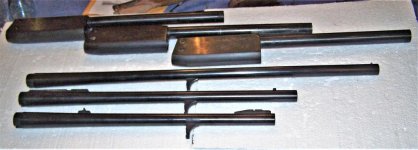A friend is sorting through his late fathers stuff and I agreed to help him move some firearms. His father bought storage pods at auction before that was made popular on TV. Most are single barrel 22s and shotguns but there is a pair of Colt 1911s, both 1918 dated and US marked. One still has the two toned magazine.
Unfortunately a lot of the Colt commercial blue has been replaced by rust from them setting in storage for many years. I don't want to over clean them, I just want to stabilize them in hopes of finding new owners.
Any suggestions? I have an old H&R in similar condition that I'm thinking of trying electrolysis cleaning. If it works I may try the Colts. Does anyone have experience with this method?
Unfortunately a lot of the Colt commercial blue has been replaced by rust from them setting in storage for many years. I don't want to over clean them, I just want to stabilize them in hopes of finding new owners.
Any suggestions? I have an old H&R in similar condition that I'm thinking of trying electrolysis cleaning. If it works I may try the Colts. Does anyone have experience with this method?


